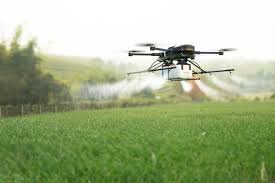How many benefits can a technology bring? When it comes to agricultural drones, there are quite a few. Agricultural integrated enterprises purchase them because they save a lot of money and increase crop yields, as I pointed out in a supporting article on this topic. As founder and CEO Arthur Erickson recently told me during my conversation with him, companies like Hylio don’t bother to tout their green certificates because they sell more farm profits. Green benefits are a fringe benefit that the rest of us will increasingly appreciate.
So, what agricultural problems have agricultural drones solved?
Let’s start with the obvious. Imaging and sensor platforms from companies such as DJI, Agricultural Expo, and eBee AG fly over fields, capturing high-resolution images of crops and non crops. They enable agricultural integrated enterprises to determine the soil conditions, irrigation conditions, and crop conditions throughout the year. Data is flooding into products such as Pix4D, a SaaS platform that synthesizes data into actionable agricultural insights.
These drones are extremely small, lightweight, and electric. Most sensor drones are fixed winged because they can cover more ground with less energy. Think of semi-automatic or fully automatic radio controlled aircraft and electric motors. They can fly for 45 or 50 minutes with a shooting resolution of 1 square inch or 2.5 × A 2.5cm image. They can carry infrared and multispectral cameras, providing a large amount of data about the condition of fields or crops. They can be manually launched and thrown into the air before crossing the pre drawn route.
So, why is this a green benefit? Okay, the first and most obvious benefit is that they replace various manned planes. Yes, for decades, many agricultural conglomerates have been hiring planes with pilots and cameras to fly over their fields. A source I saw suggested a one-way trip of $1000, and a good imaging drone costs so much and can fly year-round with minimal service and cheap electricity.
Pushing a small UAV to fly in the air consumes much less energy than pushing a Light aircraft to fly in the air. A small Cessna 150 burns an average of approximately 6 gallons of gasoline per hour and 21.1 pounds of carbon dioxide per gallon. A imaging flight may take 2-3 hours, therefore requiring 250 to 380 pounds of carbon dioxide equivalent. Multiply by about 25% of the arable land in the United States. Then multiply it several times a year.
Then throw away all of this because agricultural integrated enterprises are using electric drones. Just as drones are eroding the bottom of the civilian helicopter market, allowing everyone to access aerial photography, most fixed wing imaging drones are also eroding the bottom of the crop imaging market.
There are also crop dust removal drones provided by Hylio, DJI, and John Deere. Several large tractors cover an area equivalent to a large John Deere tractor weighing several tons. The medium-sized John Deere 7R270 diesel tractor consumes about 13.25 gallons per hour. This will convert into approximately 300 pounds of carbon dioxide. Crop dust removal drones cannot eliminate the demand for tractors, but they can replace the pass to spray herbicides, insecticides, fungicides, and fertilizers four to eight times a year on each field. A properly sized tractor can manage approximately 100 acres of land per hour, and two large drones such as Hylio’s AG-272 can also do this, but they use electricity instead of diesel.







Please sign in to comment
register